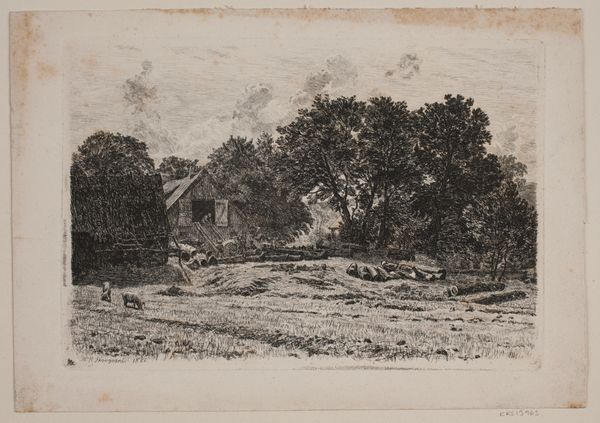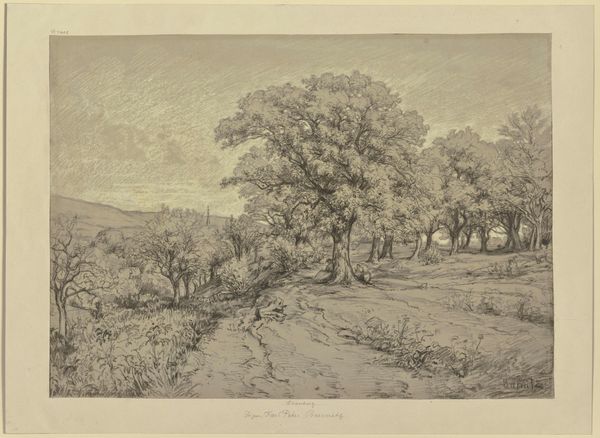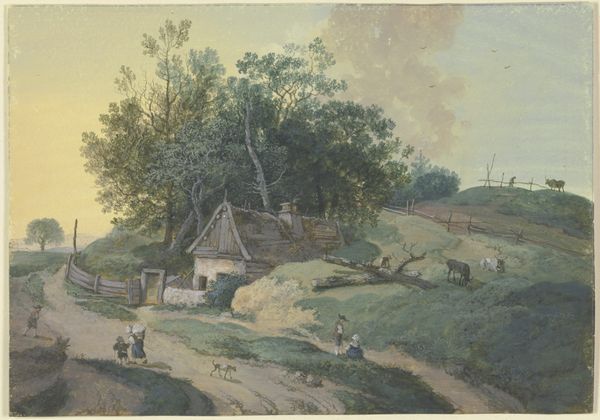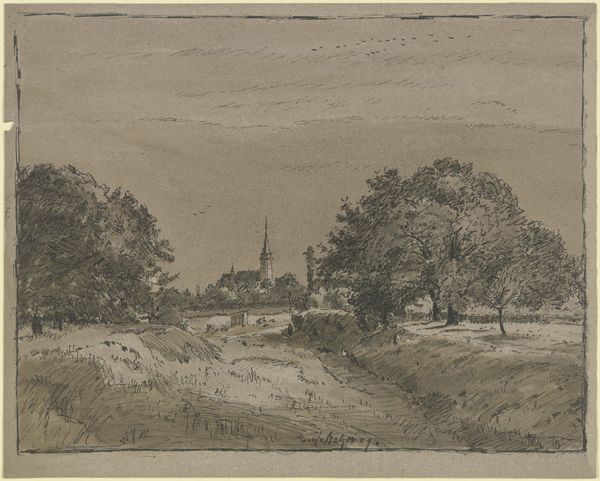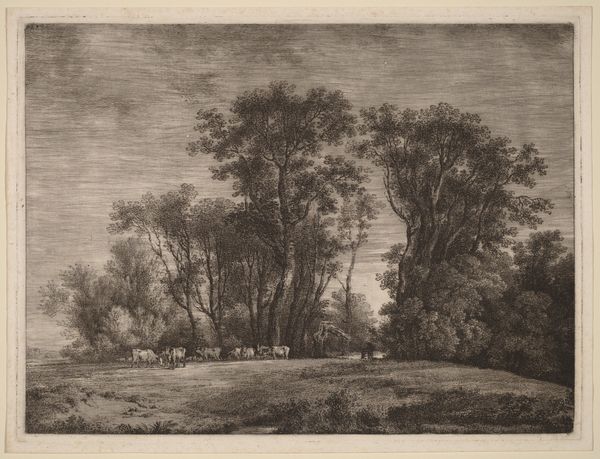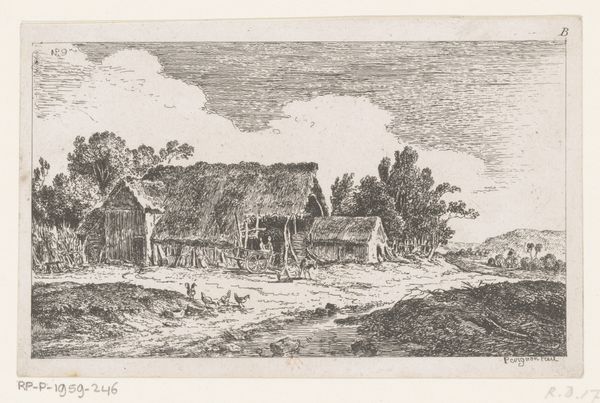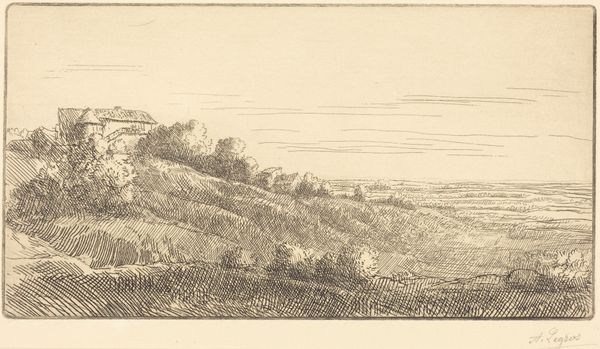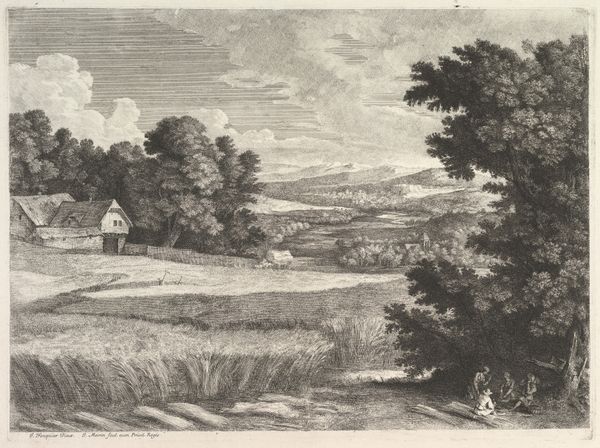
Copyright: Public Domain
Curator: Looking at "Landschaft bei Neukirchen im Westerwald," or "Landscape near Neukirchen in Westerwald," dating from 1880 by Peter Becker and held here at the Städel Museum, I’m immediately struck by the earthy tones—it’s predominantly rendered in colored pencil on paper. The scene depicts, as the title suggests, a landscape, probably a very specific place to Becker. Editor: There’s an undeniably bucolic charm, yes. What strikes me first, though, is the tangible nature of the marks – you can almost feel the pressure of the artist’s hand applying the colored pencil. Look closely and it's a network of deliberate lines building up volume and texture. Curator: Indeed, notice the small village—the steeple standing clearly—positioned far back from our assumed point of view. Churches often signify a point of unification and the importance of religion to the population during that time. Here, I feel it signifies a sort of comfortable belonging; a shared history etched within this space. Editor: Agreed. Thinking materially, it is compelling that Becker chose colored pencils – a relatively accessible and perhaps even quotidian material—to depict what reads as quite an idealized scene. I’m wondering about the accessibility of this landscape, and if the use of more commonplace tools was done with the intension of a greater audience finding points of relatability within it. Curator: It certainly lends a familiar air. One could interpret this depiction, given the period, as a longing for a simpler existence. Observe the people walking up and down along the beaten path and towards their home—the hearth—further embedding itself as an eternal, cultural trope. Editor: Exactly! Furthermore, the labor put into rendering even simple elements speaks to the value of place, home, and rootedness to local culture. The minute hatching and layering involved in depicting the distant hay wain suggests great consideration for rural life. The marks themselves evoke manual labor. Curator: So while appearing deceptively simple on the surface, there lies a symphony of intent below—Peter Becker’s homage to home, indeed. Editor: In essence, we have an exploration of how rudimentary materials, employed with attention to detail and cultural consciousness, can elevate the familiar to an iconic representation of "heimat".
Comments
No comments
Be the first to comment and join the conversation on the ultimate creative platform.
